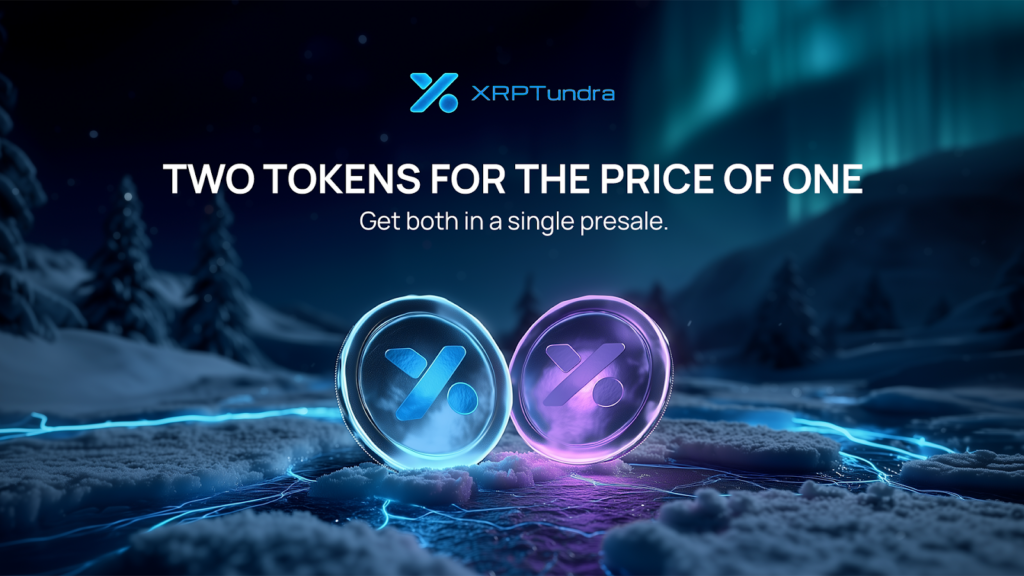Ripple’s regulatory momentum has reshaped sentiment across the XRP ecosystem. The token’s move above $3 earlier in the year followed the end of legal battle with SEC, XRP ETD progress, and an accelerated push toward obtaining a national banking charter, a step that could integrate XRP into regulated settlement rails. Analysts highlight that the next phase of price action may depend less on enthusiasm and more on demonstrable adoption.
A recent CoinDesk summary noted that XRP must hold above $3.30 to maintain a trajectory toward the $5 to $8 range during 2025. That forecast would mark one of the strongest recoveries among large-cap assets if realized, prompting renewed attention on XRPL-linked ecosystems that benefit from infrastructure growth. As analysts reconsider their models, they are increasingly looking at projects developing alongside XRP’s institutional narrative.
Analysts Revisit XRP’s 2025 Outlook as Infrastructure Adoption Accelerates
Ripple’s push toward a banking charter, combined with regulatory clarity from ongoing court rulings, has reframed how institutional desks evaluate XRP’s long-term position. Analysts tracking order book resilience, settlement integrations and liquidity corridors argue that structural progress is now influencing forecasts more directly than short-term speculation. The widely circulated view holds that a decisive move above $3.30 would strengthen the argument for a multi-year cycle that carries XRP into the upper forecast band.

Coverage from Crypto Legends recently emphasized this shift, describing how market forecasts are increasingly tied to adoption rather than volatility spikes. That perspective has led to broader examination of XRPL-connected projects, particularly those with clearly defined mechanics and transparent token economics. As a result, investors evaluating the broader ecosystem are incorporating infrastructure-driven models into their research rather than relying solely on momentum indicators.
Liquidity Architecture Becomes a Core Variable in XRPL-Linked Ecosystems
With XRP’s forecast increasingly attached to fundamentals such as settlement demand and regulatory visibility, liquidity architecture has become an important element in how analysts evaluate adjacent ecosystems. XRP Tundra stands out for its integration of Meteora’s DAMM V2 pools for TUNDRA-S, a configuration that uses dynamic fees to reduce early volatility and prevent the rapid sell-offs that often disrupt new token launches. This approach lets fees begin at heightened levels during initial trading and then gradually normalize, creating a safer price-formation period.
The design also benefits long-term holders by feeding trading fees into the broader ecosystem. Because the pools adjust in real time, automated trading bots face economic disincentives to exploit early liquidity gaps, and holders gain a more stable environment as the market matures. Analysts monitoring early-stage DeFi activity have pointed to these mechanics as a sign that project teams are anticipating the regulatory trend toward documented liquidity management. In a market now paying closer attention to underlying structure, DAMM V2 has become a meaningful differentiator.
Tundra’s Yield Framework and the Cryo Vault Model Enter Market Discussions
Alongside liquidity design, analysts are watching the upcoming Cryo Vault framework, which offers different participation modes depending on user preference. One track operates without a commitment period, offering lower-range yields of about 4% to 6%, instant withdrawal access and a minimum entry around 100 TUNDRA-S, making it suitable for active participants.

A second path introduces a commitment window that lasts roughly a month, raising the yield range into the 8% to 12% area and setting the minimum entry at 500 TUNDRA-S, with withdrawals enabled once the period ends. A third route extends the commitment horizon to about ninety days, increasing potential returns into the 15% to 20% bracket while requiring at least 1,000 TUNDRA-S. Analysts note that this distribution of options helps model potential staking behavior once the vaults open, offering visibility into how long-term participation might develop.
These mechanics sit alongside the dual-token structure that underpins the presale. TUNDRA-S, priced at $0.214 in Phase 12 with an 8% bonus, serves as the utility and staking asset, while TUNDRA-X is issued at a $0.107 reference value and distributed for free. The confirmed launch valuations — $2.5 for TUNDRA-S and $1.25 for TUNDRA-X — give early participants clear benchmarks to compare against. With more than $3.5M raised so far, analysts tracking early-stage ecosystems are incorporating these fixed economics into their projections as they assess how the broader XRP environment may evolve.
Documentation and Verification Support Analyst Models for Emerging Ecosystems
As research desks apply stricter criteria to digital-asset evaluations, verification has become a core point of analysis. Many investors searching is XRP Tundra legit focus on the ecosystem’s documentation trail, which includes independent contract audits from Cyberscope, Solidproof and FreshCoins. The team also completed identity verification through Vital Block’s KYC certification, reinforcing a level of transparency that aligns with the regulatory direction forming across US agencies.
Ripple’s progress toward regulated settlement infrastructure has shifted market expectations, and analysts tracking XRP’s potential breakout range are widening their view to include ecosystems capable of scaling alongside it. With DAMM-based liquidity, a multi-path staking system and defined listing valuations, XRP Tundra has entered those discussions as a developing component of the broader 2025 cycle.

Join thousands of early participants preparing for the next phase of XRPL-driven growth and secure your position ahead of listing.
Buy Tundra Now: official XRP Tundra website
How To Buy Tundra: step-by-step guide
Security and Trust: FreshCoins audit
Join the Community: Telegram
